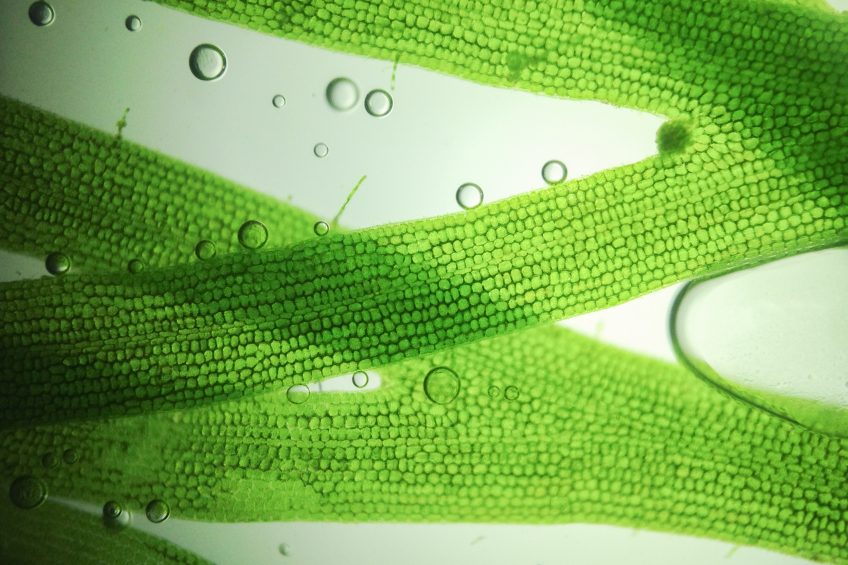Algae can become new pig enrichment material

Algae are known to be a feed ingredient as well as a feed additive – but it doesn’t stop there. French researchers have used algae material as a basis for enrichment materials for piglets, with success.
How that worked in practice was tested by scientists attached to the French Agency for Food, Environmental and Occupational Health & Safety (Anses), the European University of Brittany (UEB), France and the Brittany Chambers of Agriculture, France. Lead author Françoise Pol presented her findings in a presentation at the 49th French Swine Research Days, held in Paris, France, which were held January 31 and February 1, 2017.
An organic material that is perfect for pigs
Key to the research into algae as basis material is that ideally, enrichment material should be of material that pigs can manipulate (destroy) and also that they can chew on it without any danger for their health.
Straw is often used, but this can disappear through slats. Wood on the other hand, is known to be able to hurt pigs.
Trial set up in experimental pig facilities
The effect of enrichment material, made of compressed algae, was assessed at the experimental facilities of Crécom, France. The study involved 444 pigs from 2 successive batches.
In farrowing rooms, half of the crates received a cylinder made from compressed algae material; the other half, being control crates, received no material. After weaning, the weaners, then growers and finisher pigs were given either algae cylinders or a piece of wood or a metallic chain.
Material weight, animal behaviour, body condition and body weight were regularly recorded, and the scientists measured salivary control before and after room transfers.
Use of algae-based cylinders in pens
The researchers observed a growing intensity of cylinder use. 1 cylinder at the most in farrowing crates, 2 in post-weaning pens and more than 10 in growing-finishing pens. The researchers did not notice any negative effect on pig health.
Performances, body condition, and stress levels were similar between pigs given the different available materials. Only behaviour was different between materials. Analysis of behaviour showed that during the 1st weeks of post-weaning, pigs manipulated the chain more than other materials (3.9% observations vs 1.2% for algae and 2.5% for wood).
The researchers concluded that enrichment material made from algae is interesting to promote manipulating behaviour in piglets from birth to post-weaning. In these stages, its use is compatible with use in field conditions.
Lead author Françoise Pol is attached to Anses as well as the European University of Brtittany, just like her fellow researchers Sarah Gallien and Adeline Huneau. Yannick Ramonet was involved on behalf of the Brittany Chambers of Agriculture.












